African ingenuity a part of major American astronomy project
Engela Duvenage
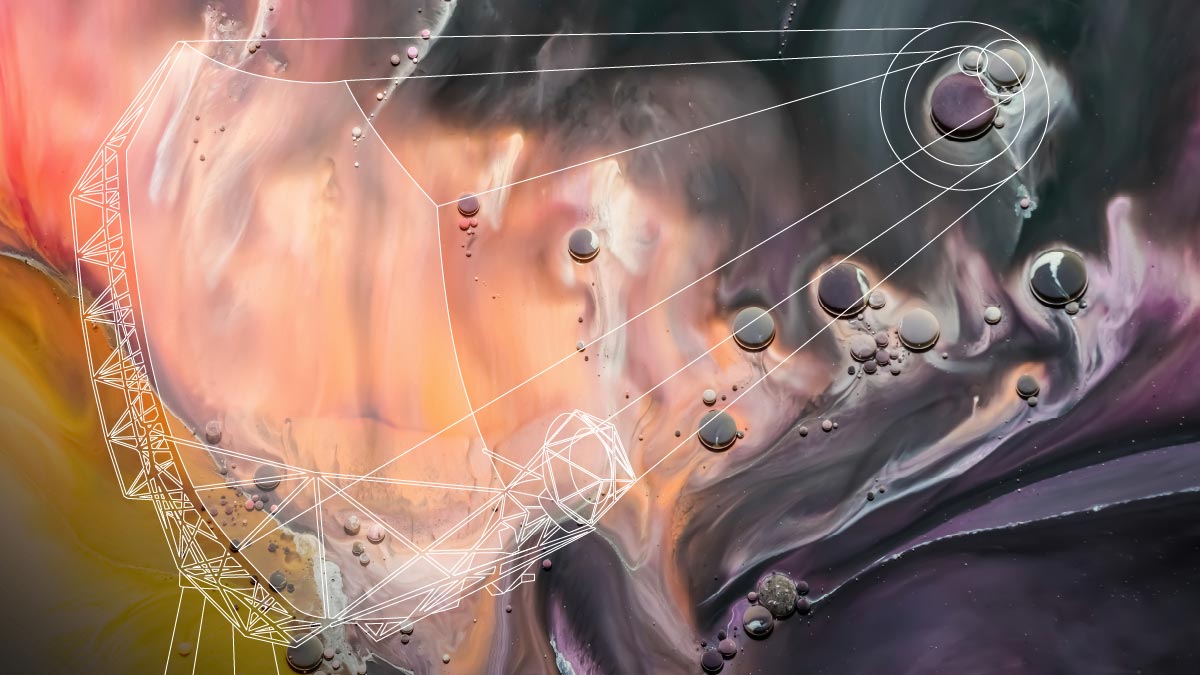
Various radio telescope projects across the globe allow astronomers to pick up on the radio waves coming from stars, planets, galaxies, and gas molecules in an effort to understand the development of the universe at large. | Illustration by Ronel van Heerden
Southern African ingenuity in antenna design is on display as a part of what promises to be the USA’s next major national facility in ground-based radio astronomy.
If you plan to ever travel across the Plains of San Agustin in the American state of New Mexico, make a mental note to stop at a picnic spot along Route 60, some 35 kilometres from the hamlet of Magdalena, to do some astronomy tourism.
Thousands of years ago, this flatland was a great lake. By the late 2020s, the expanse will be dotted with 263 interferometric radio antennas as a part of the planned project around the building of the USA’s Next Generation Very Large Array (ngVLA).
The 244 bigger 18-metre-wide shaped offset Gregorian reflector systems (the characteristic "dishes") among them will be more than beacons of discovery into the distant origins of the universe — they will also serve as markers of Southern African astronomical engineering in action.
Namibian Prof Robert Lehmensiek and South African Prof Dirk de Villiers are the duo behind the specific, highly exact shape and surface design of these reflector systems, each with six horn antennas.
“Together, the combination of dish and horn antennas forms the ‘eye’ of the telescope — a very sensitive one at that — that picks up on electromagnetic radio waves,” explains Lehmensiek.
The duo’s handiwork will help determine just how far into the yet-unexplored and often cloudy, dusty corners of the universe astronomers will be able to probe with the ngVLA, all in search of the faintest possible signs of distant galaxies and previously unknown celestial objects.
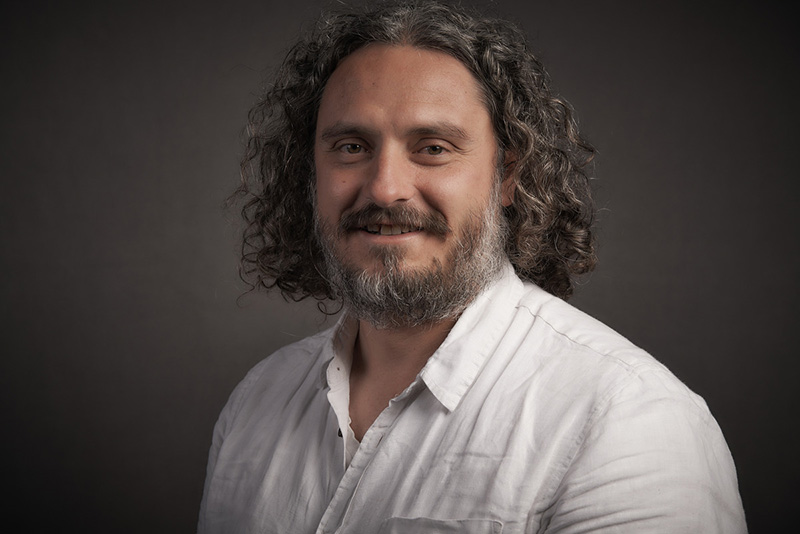
Prof Dirk de Villiers | Photo courtesy of 2022 International Microwave Symposium
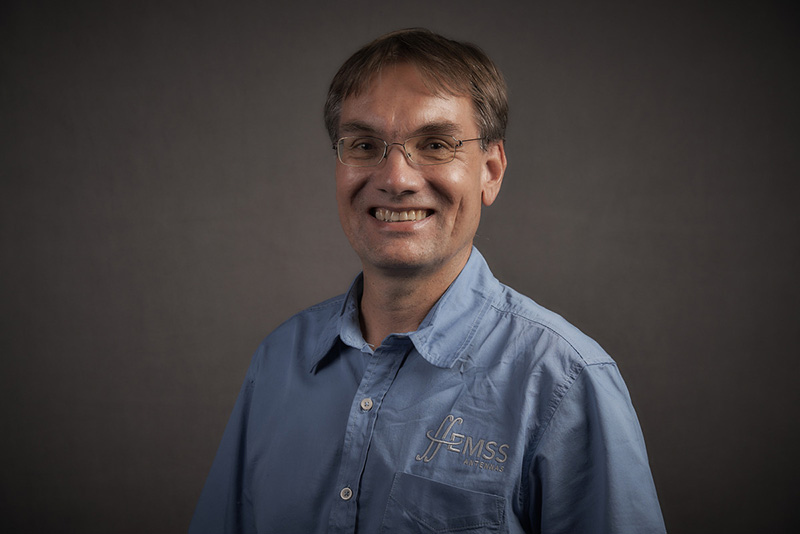
Prof Robert Lehmensiek | Photo courtesy of 2022 International Microwave Symposium
Major American facility
The ngVLA is billed as the USA’s “next major national facility in ground-based radio astronomy”. When the National Science Foundation (NSF) announced it on Twitter in 2020, they said it would “help astronomers explore distant, obscured galaxies, study the evolution of black holes, and learn more about the conditions for extraterrestrial life, all with unprecedented detail and resolution”.
“It will be the biggest radio telescope operating in the northern hemisphere, working as an observatory that allows for different types of experiments to be performed,” explains De Villiers. Since 2018, he has been serving as the SARChI Research Chair in Antenna Systems for the Square Kilometre Array (SKA) in the Department of Electrical and Electronic Engineering at Stellenbosch University (SU).
“It’s an honour to work on the ngVLA, knowing that it will perform better than any other radio astronomy telescope currently in operation over the same frequency bands,” says Lehmensiek, formerly of EMSS Antennas in Stellenbosch and, since 2022, a research engineer at the National Radio Astronomy Observatory (NRAO) Central Development Laboratory (CDL) in Charlottesville, USA. He is still an extraordinary professor in SU’s Department of Electrical and Electronic Engineering.
Both antenna specialists are SU alumni, Lehmensiek having received his doctoral degree in engineering in 2001 and De Villiers his in 2007. Both honed their skills in dish and antenna design as a part of the SKA radio telescope project at large, for which the first prototype dishes are already operational near Carnarvon in the Northern Cape Karoo. Over the past 15 years, they were involved in the design of SKA precursors such as KAT-7 and MeerKAT.
De Villiers fondly remembers the icy morning in January 2019 when he and Lehmensiek first stopped to take in the sight of the Karoo-like shrublands of the Plains of San Agustin. At the time, they were en route back to South Africa, after having the previous day successfully provided their first feedback report to the ngVLA project team at the NRAO Domenici Science Operations Center in nearby Socorro.
At their backs, only a few dozen metres from the roadside, loomed one of the 40-year-old Karl G. Jansky Very Large Array (VLA) antennas that the ngVLA is set to replace. In front of them lay the foundation on which the prototype dish for the Atacama Large Millimetre Array (ALMA), now in Chile, once stood. (Come later this year, it will be used to erect the first of the 20-metre-tall ngVLA prototype antennas.)
At the time, they were among a select few people able to truly envision the full scope of the ngVLA, and what it would take to make it function optimally. They also knew how much work still lay ahead before the final design deadline of May 2023.
“Each of the 244 identical dishes will have six horn antennas, as the ngVLA will work over six frequency bands,” says De Villiers. “In all, the ngVLA will operate at similar frequencies to the Jansky VLA it is set to replace (from 1,2 GHz to 116 GHz), with a gap between 50 GHz and 70 GHz where radio waves cannot propagate through our atmosphere due to absorption by oxygen molecules.”
It will, however, be 10 times more sensitive than the Jansky VLA and have significantly better spatial resolution.
“This means it will be able to ‘see’ 10 times further and in 10 times more detail,” Lehmensiek points out.
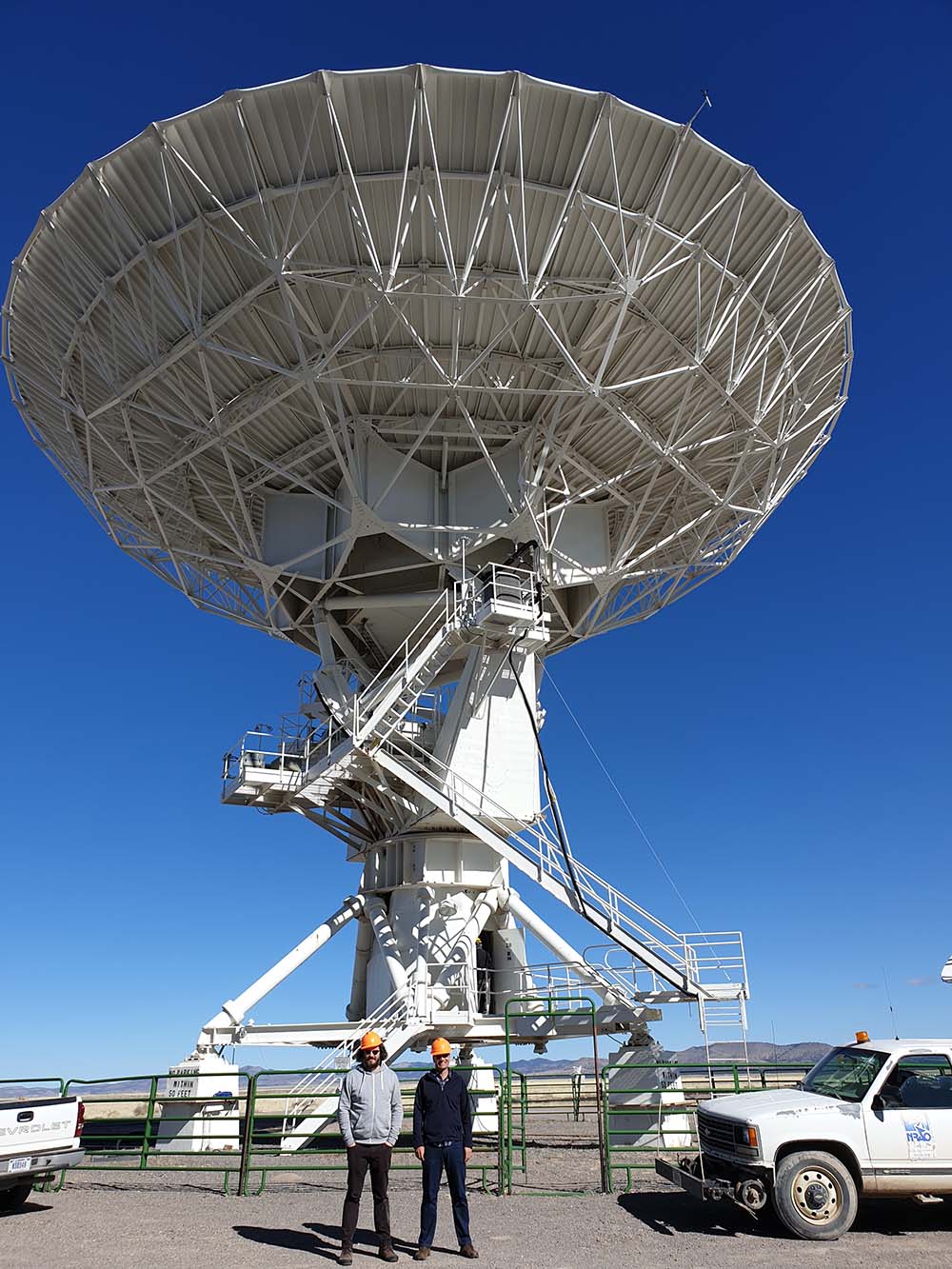
Prof Dirk de Villiers and Prof Robert Lehmensiek in 2019, in front of one of the Karl G. Jansky Very Large Array antennas currently in use on the Plains of Agustin | Photo by Prof Robert Lehmensiek
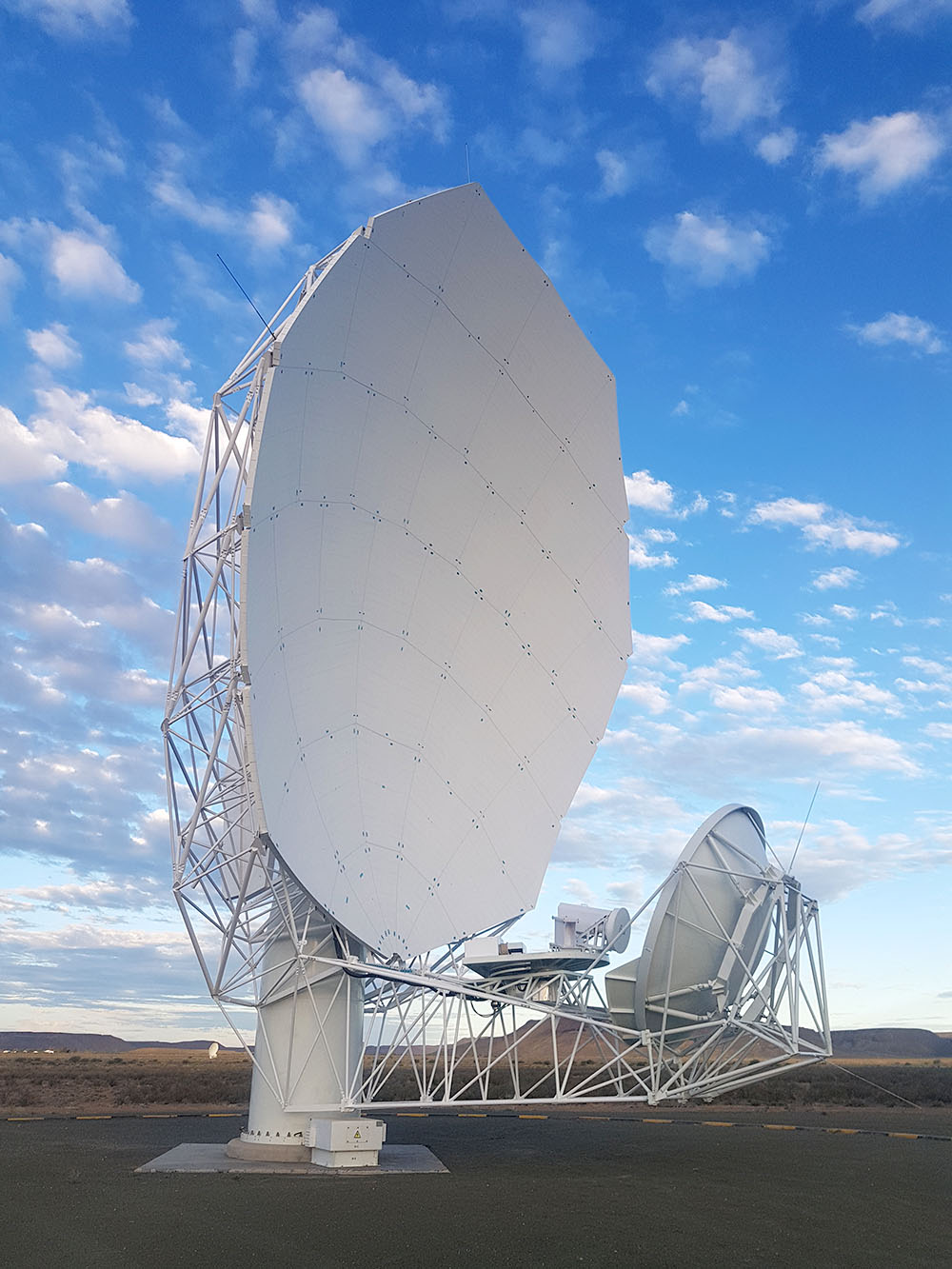
Over the past 15 years, the duo has worked together on the design of SKA precursors such as MeerKAT (shown here) and KAT-7. | Photo by Prof Dirk de Villiers
Global recognition
Modern antenna designs such as that of the ngVLA rely heavily on numerical simulation and the optimisation of physical structures to ensure that each individual element in the series of dishes in an array functions optimally, all to best register electromagnetic signals from outer space. The goal is to provide astronomers with a clear "view" of the radio waves emitted by celestial objects across the universe.
“The resultant optics, feeds, and overall sensitivities achieved are close to the theoretical optimum,” Lehmensiek and De Villiers wrote about the design in their 2021 paper titled "An Optimal 18 m Shaped Offset Gregorian Reflector for the ngVLA Radio Telescope". It was published in the journal IEEE Transactions on Antennas and Propagation, the top academic engineering journal in the field of electromagnetics and antenna design.
In 2022, the pair received the Harold A. Wheeler Applications Prize Paper Award from the Institute of Electrical and Electronics Engineers (IEEE) for this paper.
De Villiers and Lehmensiek are the first researchers from Africa to receive this international award celebrating leadership in practical antenna design.
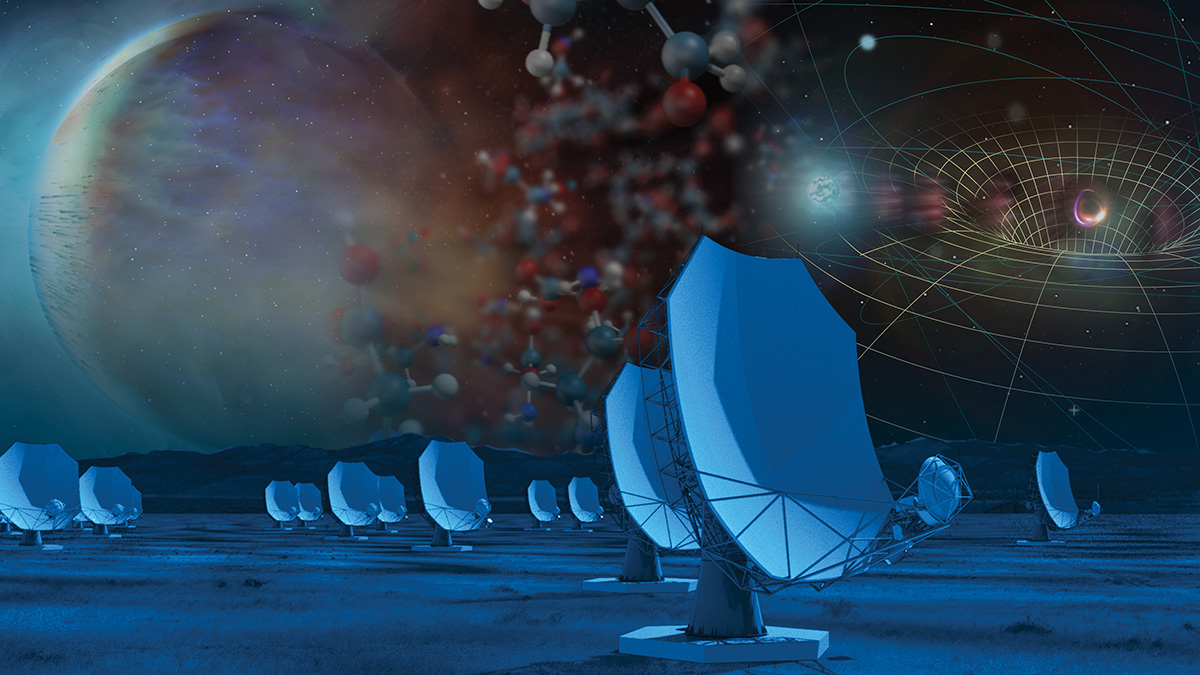
An artist's impression of the ngVLA. The proposed array, consisting of more than 200 antennas, is planned to extend across the desert from the southwest of the United States into northern Mexico. | Illustration courtesy of National Radio Astronomy Observatory
The prototype
The ngVLA prototype is currently being cut — panel by panel — by a network of suppliers in Europe, brought together by mtex antenna technology, a German mechanical engineering company specialising in the manufacture of large reflector antennas.
Each section of the design will be shipped to the USA before on-site construction can, hopefully, start by late 2023.
The German engineering company designed the mechanics behind the antennas, the support strut or "pedestal" on which each dish will be mounted, the foundations, and other related frameworks. All these components must be extremely stable to withstand the possible influences of wind, gravity, and temperature extremes.
“The dishes work at 116 GHz, which corresponds to a wavelength of only about 2,5 millimetres. To remain focused, they must move as little as possible during scanning,” explains De Villiers, who is evaluating this part of the design process with Lehmensiek.
All to realise the five key science goals set for this major American infrastructure project: to unveil the formation of solar system analogs on terrestrial scales; to probe the initial conditions for planetary systems and life with astrochemistry; to chart the assembly, structure, and evolution of galaxies from the first billion years to the present; to use pulsars in the galactic centre to make a fundamental test of gravity; and to understand the formation and evolution of stellar and supermassive black holes in the era of multi-messenger astronomy.
As sensitive as possible
Lehmensiek and De Villiers believe they have squeezed every last bit of possible sensitivity from their dish design. This allows the total performance of the ngVLA array to be several percentage points better than that of any other similar piece of pricy infrastructure currently in use.
“In theory, this means that if you plan to build 100 dishes, and each one is 1% more sensitive than what we had before, the telescope will be as sensitive as 101 dishes. In other words, you’d only need to build 100 dishes to get the sensitivity of 101. This will save millions of dollars,” De Villiers explains.
The duo’s designs are all about achieving maximum receiving sensitivity, and about getting every micron of the surface shape of each dish just right, De Villiers reiterates.
But it’s also about matching the reflector optics to the antenna feed horns. This is done to maximally reduce factors such as plate scale, cross-polarisation, scan loss, and the sidelobes of an antenna’s far-field radiation pattern, while still maximising the sensitivity.
“High-performance dishes are only possible when the antennas receiving the energy reflected from the dishes are themselves near optimal. Therefore, we first designed the so-called ‘feed antennas’ to have maximally symmetric radiation patterns over their operating bandwidths,” De Villiers notes.
In the design of these antennas, they also ensured that they do not pick up radiation coming from the sides and from behind the feeds.
“The feed antennas optimally absorb all the energy from space so carefully focused by the dishes,” says De Villiers. “The antenna at the focus of each dish is sensitive to signals coming from all around, though less so to signals coming from the dishes. The dishes are focused to reflect energy mostly coming from the cold sky into the receiver.”
The reflective surface of a 1x4-metre sub-reflector extension shields each antenna’s sensitive receiver from picking up "scrambled", unwanted ground noise caused by the earth’s warmer temperature. It is fixed to the bottom of the smaller of the two mirrors (the so-called "sub-reflector") in the system.
“This makes the dishes much more sensitive to the very faint signals of research interest coming from space,” De Villiers explains.
The duo first introduced this "shield" in their designs of the MeerKAT dishes, to much acclaim from other designers.

The research initiatives reported on above are geared towards addressing the United Nations’ Sustainable Development Goals numbers 9 and 17 and goal number 2 of the African Union’s Agenda 2063.
Useful links
SU’s Department of Electrical and Electronic Engineering
Next Generation Very Large Array (ngVLA)
Square Kilometre Array (SKA)
Twitter: @MatiesResearch and @StellenboschUni